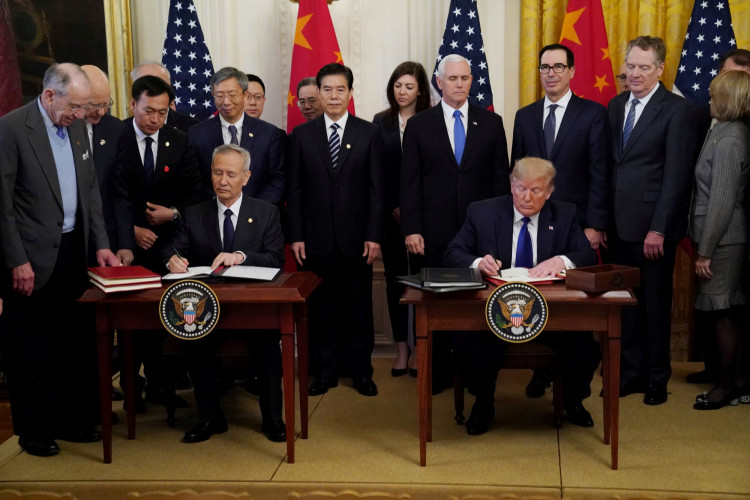Phase one of the trade deal between the United States and China was reported to favor state-owned companies over measures that would result in the recovery of the Chinese economy. Beijing was said to have been pressured by the deal to impose state-owned enterprises (SOEs) to purchase more imports to fulfill its end on the trade deal.
According to the South China Morning Post, phase one of the trade deal between the US and China would render its state-owned enterprises to have more influence in the Chinese economy than local industries.
The report claimed that Beijing has been pressured to force its SOEs to purchase more US imports to hold its end in the trade deal. According to new research by the Peterson Institute for International Economics, the said mandate is counterproductive to US President Donald Trump's policy goals.
The research claimed that SOEs have only rendered a quarter of the total imports from the US since 2019. It was further discussed that the trade deal would put more pressure on China to force its SOEs to buy more US products including purchasing an additional 200 billion USD worth of American-made goods by the end of 2021, said Peterson research fellows Chad P. Bown and Mary E. Lovely.
It was also revealed that most American-made products included in the trade deal have been acquired by the private sector entities. Furthermore, the tariff rates applicable in China were also explained to make the purchases more expensive for the privately-owned businesses that would acquire them.
It was also highlighted in the report that US agricultural products would still be imposed with the 25 percent tariff rate due to the increases in US exports and lowered duties on imports coming from Brazil and other countries.
Bown and Lovely added that the Trump administration has explained that the costly trade was necessary to the country the Chinese economic model. However, they claimed that the structuring of the trade deal would be at the expense of the Chinese private sector is US exports would grow in China.
In other news, it was claimed that the Port of Los Angeles that is the gateway to US-China trade has incurred a 25 percent decline in container volumes since March 2020. It was also revealed that daily container traffic at US ports other than the Port of Los Angeles also incurred losses by 32,550 last February 4 ending at only 2,784 containers shipped by February 26, reported Yahoo! News.






